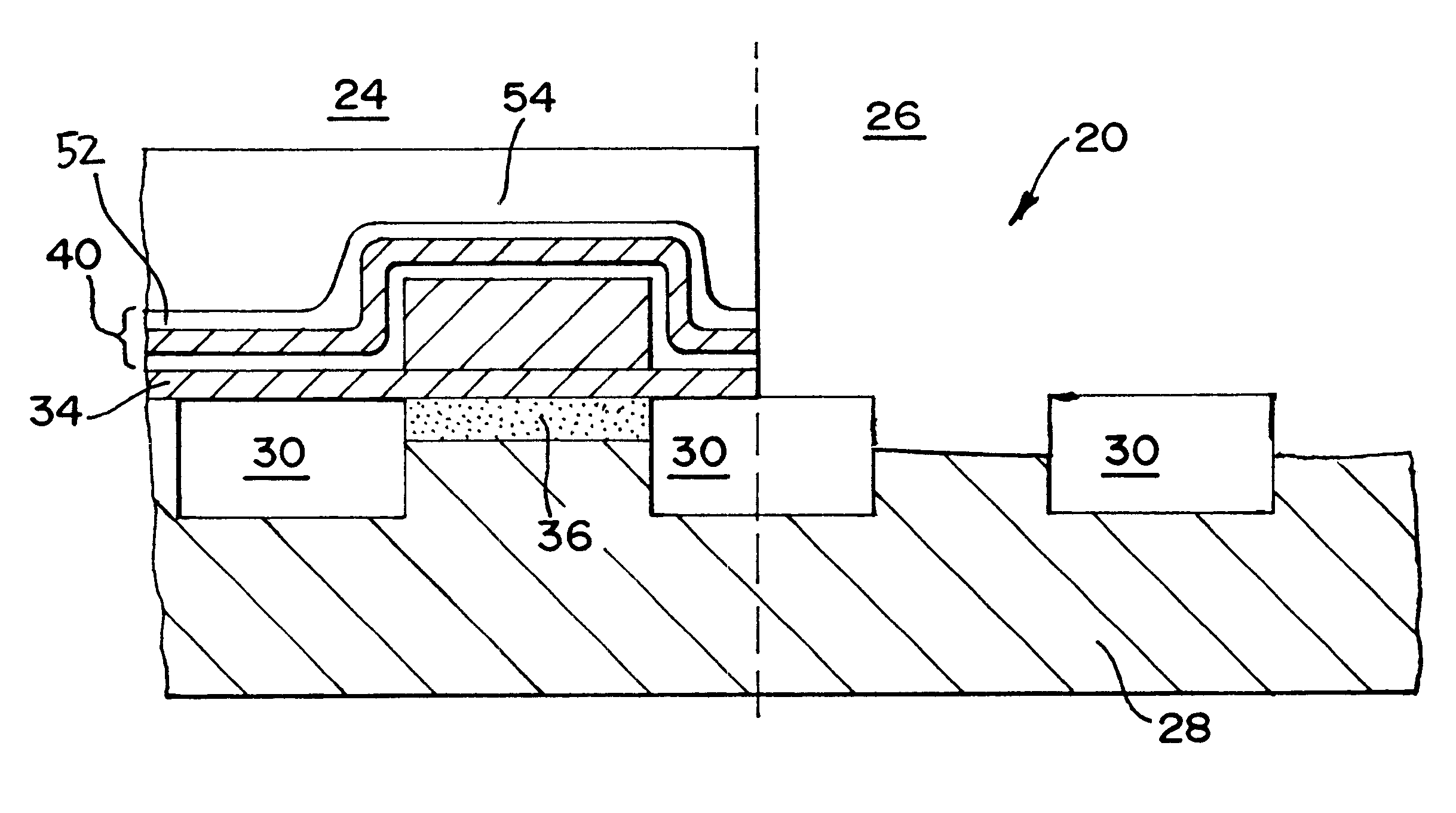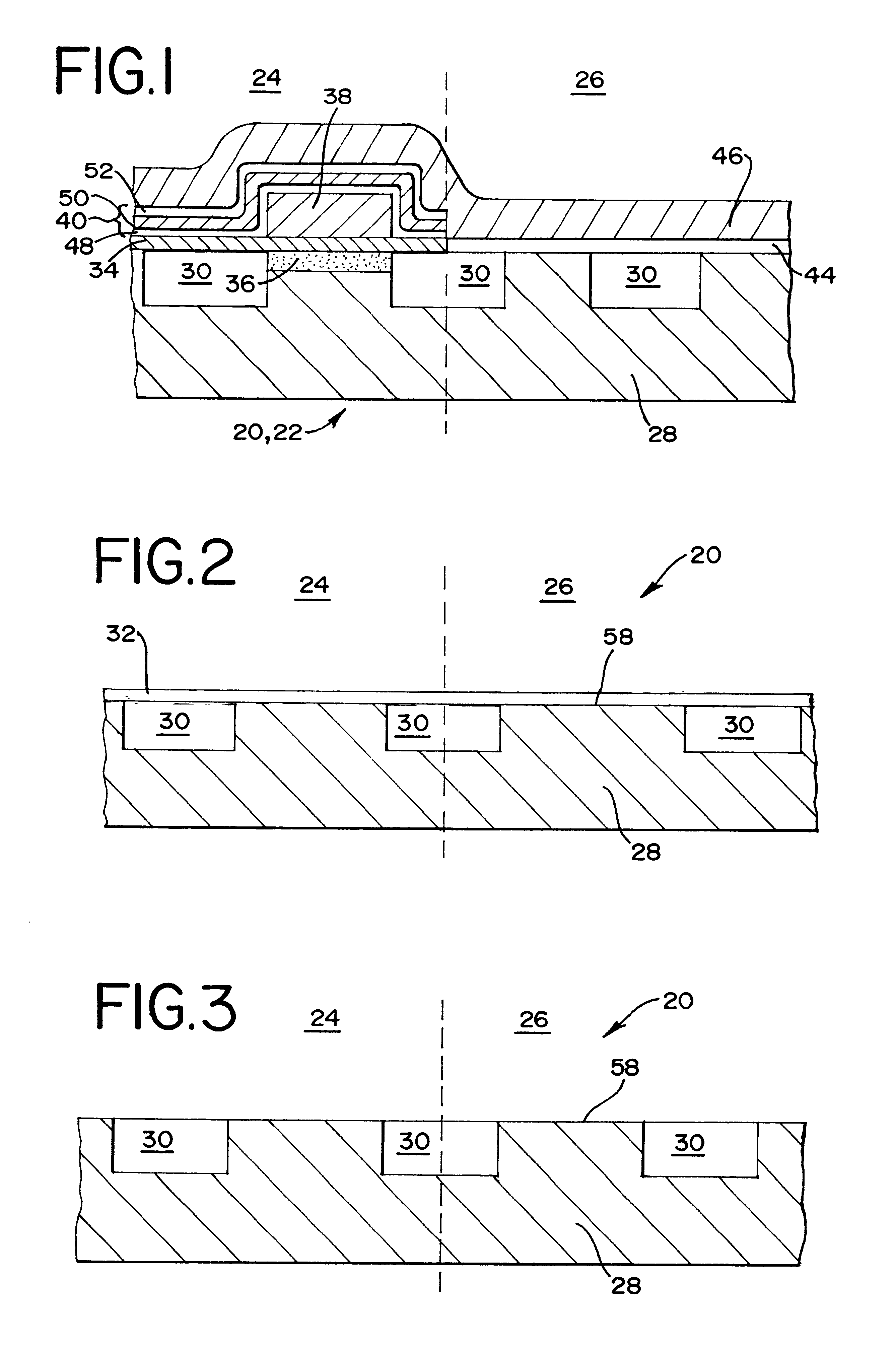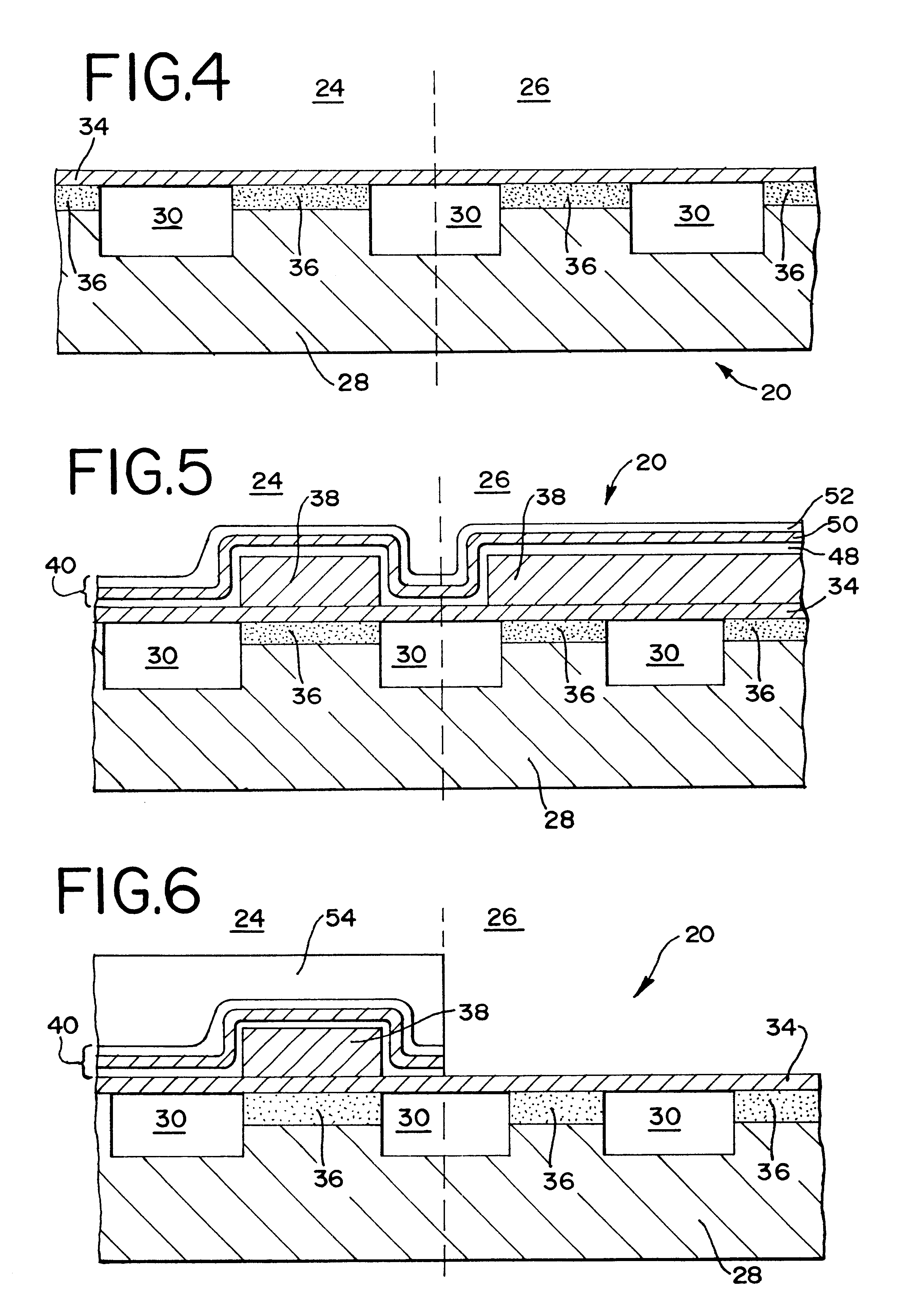Re-oxidation approach to improve peripheral gate oxide integrity in a tunnel nitride oxidation process
a tunnel nitride and oxidation process technology, applied in the field of memory devices, can solve the problems of oxide damage, difficult fabrication of tunnel oxides in memory cells, and difficult reliability of tunnel oxides
- Summary
- Abstract
- Description
- Claims
- Application Information
AI Technical Summary
Benefits of technology
Problems solved by technology
Method used
Image
Examples
Embodiment Construction
Shown in FIG. 1, in cross-section, is a semiconductor device 20, and in particular, a memory device 22. The semiconductor device 20 includes any semiconductor device known to those skilled in the art, such as a capacitor, a diode, a resistor, an amplifier, a memory chip, a microchip, an integrated circuit, a transistor, a digital signal processor, and a logic chip. Memory device 22 includes any memory device known by those skilled in the art, such as a RAM device, a DRAM device, an SDRAM device, a ROM device, an NROM device, and PROM device, an EEPROM device such as a one-bit or two-bit EEPROM device, and any non-volatile memory device known to those skilled in the art. Please note that FIGS. 1-9 illustrate only a portion of the memory device 22 and that memory device 22 may include many memory cells within memory device 22. For the sake of clarity, these additional memory cells have been left out of FIGS. 1-9.
Memory device 22 includes a semiconductor substrate 28 having a core regi...
PUM
 Login to View More
Login to View More Abstract
Description
Claims
Application Information
 Login to View More
Login to View More - R&D
- Intellectual Property
- Life Sciences
- Materials
- Tech Scout
- Unparalleled Data Quality
- Higher Quality Content
- 60% Fewer Hallucinations
Browse by: Latest US Patents, China's latest patents, Technical Efficacy Thesaurus, Application Domain, Technology Topic, Popular Technical Reports.
© 2025 PatSnap. All rights reserved.Legal|Privacy policy|Modern Slavery Act Transparency Statement|Sitemap|About US| Contact US: help@patsnap.com



